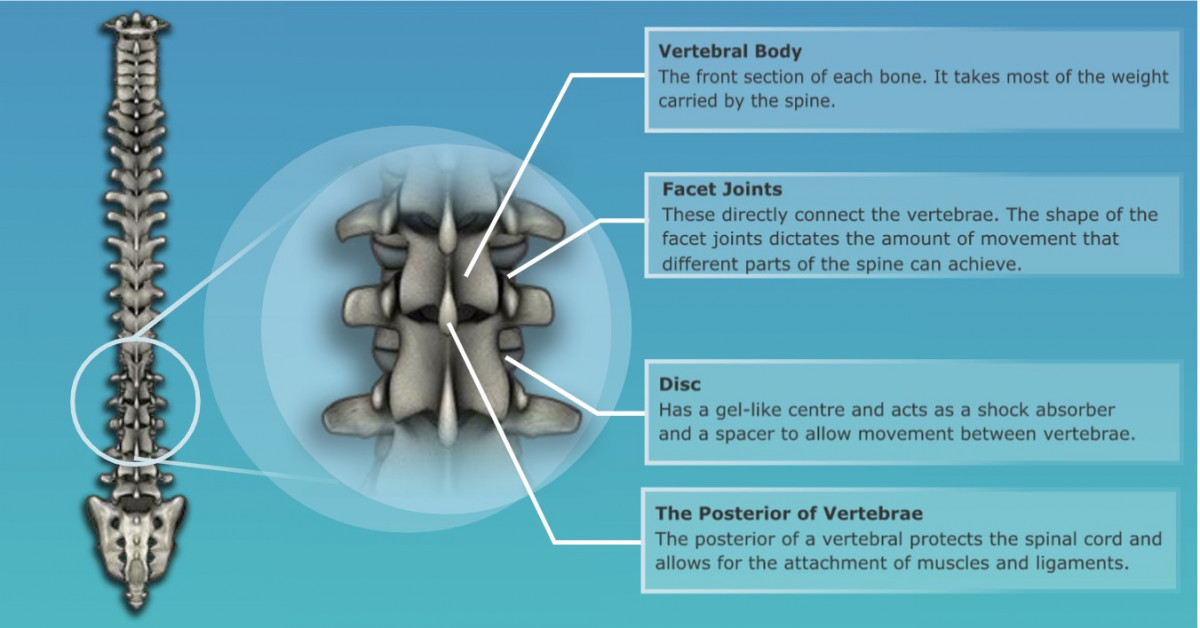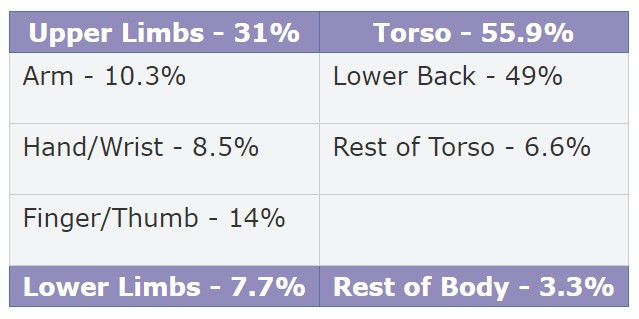
| 25 August 2020
For some industries, manual handling is a routine activity. Nevertheless, to promote your own safety, it is important to understand the risks and regulations around manual handling at work and, to maintain workplace health for your workers, bolster up your training and risk assessment.
38.8 million. That’s the estimated number of days lost due to work-related ill health and non-fatal workplace injuries in 2019/20, according to Health and Safety Executive statistics. Labour Force Survey evidence shows around half a million work-related musculoskeletal disorder cases for the same year, accounting for over 22% (8.9 million) of sick days and, on average, 18.4 days off work per person.
Longer-term, it’s likely some of those injuries may lead to chronic, or long-term, musculoskeletal disorders and conditions, affecting the sufferer’s ability to work and enjoy daily life. Employers have a responsibility to reduce the risk of injury as far as possible. This can include ensuring that employees take the most appropriate manual handling approach when it comes to correct carrying, lifting, and other techniques.
Since musculoskeletal disorders have been the most commonly mentioned condition in the last six self-reported work-related illness surveys, it’s likely that learning and using correct manual handling techniques will reduce the risk.
The fine-tuned skeleton
There are thought to be around 650 named skeletal muscles in the complex machine we call the human body. In an average day, every muscle in our body comes under astonishing pressure.
Unlike smooth muscle and cardiac muscle, skeletal muscles are voluntary: we control them. It follows that the better we take care of them, the longer they’ll last, and the better they’ll function; but unfortunately, it’s only too easy to fall into incorrect manual handling habits.
Incorrect manual handling can cause:
- Neck pain
- Discomfort, pain, and lack of function in the upper back or lower back – short-term (acute) or long-term (chronic)
- Swelling and aches
- Mental health conditions including depression.
The lower back, or lumbar region, is a particularly vulnerable spot, typically accounting for just under half of manual handling injuries.
What qualifies as a manual handling task?
Manual handling refers to any activity requiring the use of force by a person to lift, lower, push, pull, hold or restrain something. Putting boxes on shelves, gardening, cleaning, operating machinery or handling animals and even typing are all examples of manual handling tasks.
The law
Amazingly, it’s almost 30 years since the Manual Handling Operations Regulations legislation came into force in 1992, along with several other important laws, as part of a major review by the Health and Safety Commission.
The Manual Handling Operations Regulations legislation was amended and updated in 2002, and the law requires employers to ensure that employees within their sectors are working as safely as possible. Other relevant legislation includes the Provision and Use of Work Equipment Regulations 1998 (PUWER) and the Lifting Operations and Lifting Equipment Regulations 1998 (LOLER).
The Management of Health and Safety at Work Regulations outline the responsibilities of employers towards their staff. The Manual Handling at Work Regulations 1992 legislation clearly states that employers have a duty to protect employees from “risk of injury and ill health from hazardous manual handling tasks in the workplace”.
Quite apart from the potential impact on the health of employees, incorrect manual handling techniques can risk financial, reputational, and operational damage to your organisation. Employers have been fined substantial amounts for not ensuring that their employees were trained in the appropriate manual handling techniques, as mandated in the MHOR Regulations. While most manual handling accidents don’t result in legal action, it’s always worth taking steps to safeguard your business from similar lawsuits.
Manual Handling Hazards
Just like the way we use our skeletal muscles, the application of manual handling techniques is subject to our own voluntary control. The movement of our bodies is mostly controlled, we’re thus at liberty to use our own free will and agency to make good decisions and likewise, poor decisions.
Whilst the law does set some guidelines and limits, an understanding of how muscles function is essential to ensure safe handling of weights and protect our health.
As you can see below, our spine in particular often bears the brunt of these decisions/movements.

The upper limbs are also prone to injuries, accounting for just under a third of the total – that’s finger/thumb, hand/wrist, and arm.

Everyday tasks we take for granted, like carrying and lifting, can result in unnecessary strain on the body if we don’t hold items at the correct angle, for instance, or lift and move only loads within our own carrying capacity. Where health conditions are involved, such as pregnancy or muscle weakness, it’s even more important to take sufficient care. And yes, that applies even if you’re “just” sitting in a seat most of the time, and turning or twisting to deal with customers at the service hatch.
Manual handling in the workplace
Healthcare
In certain industries and professions, it’s especially important to apply correct manual handling techniques. In the care sector, it’s vital to safeguard the health of those offering care, and those being cared for. Carers, nurses, and those in the physiotherapy field, for instance, need to be especially alert to any work-related safety hazards when looking after patients. This applies whether a patient is a fit and healthy adult, or requires more specialised aged care or child care.
Construction
It isn’t only nursing and healthcare where manual handling techniques are essential to maintain the health and well-being of staff. Another sector where up-to-date manual handling knowledge needs to be applied on a daily basis is the construction industry. While some aspects of the work may be relatively predictable, it helps to have an understanding of the laws of physics as they apply to our muscles, especially when dealing with heavy loads.
Manual Handling Risk Assessment: Where to Start
Whether you’re cleaning equipment or premises, lifting items or patients, pulling or repositioning items or patients, or simply sitting at your desk minding your business, employers need to ensure staff compliance with appropriate manual handling techniques/regulations for their industry. These range from assessment to reporting. And in healthcare, much of this needs to be done against a background of ensuring the patient’s dignity and privacy.
In the wake of COVID-19, it’s more important than ever to ensure staff members have the manual handling skills to deal effectively with cleaning equipment and premises. Managers and employees might also need to work together to take stock of how a storeroom or nurses station is laid out.
TILE: The 4 key areas of manual handling
When carrying out a manual handling risk assessment, staff should be considering four main areas: the nature of the task, the capabilities of the individual performing it, the type of load and the environment the manual handling is taking place in. These four factors can be easily remembered by using the acronym TILE.
Size up the task
Consider the task on a basic, logistical level. What does the manual handling process involve? What do you want to achieve? What is the end result? What are the steps involved to reach that end? Factors include the positioning of the load, the size of the area that needs to be covered, and the number of people needed to carry it out. Particular consideration should be given to whether the handler will need to stoop down or twist at the waist at any point, as well as ensuring those involved have adequate opportunity to rest and recover.
Size up the individual/s
This step requires employers to consider the personal capabilities of those involved in the work, including their age, pre-existing health conditions or prior injuries, the equipment they possess and whether or not they require specialist training. Some tasks may call for a person with a specific level of strength, height, or flexibility.
Size up the load
This doesn’t just mean checking the weight of the object or objects. There are several characteristics beyond weight that can make loads difficult or easy to transport. It could be an unwieldy shape, difficult to grasp, it could obscure the carrier’s view when they hold it or contain products that are likely to shift around during transit, which can affect balance and damage the load itself. Take the time to inspect every aspect of the load, not just how it looks at face value or how it reads on paper.
Size up the environment
The environment can also play a key role in manual handling tasks. This is especially the case if space is restricted, if the ground is uneven or slippery, if the lighting or ventilation is poor, and if the environment is exposed to weather and the elements. As such, taking these factors into account should also be a key part of the risk assessment process.
Best practice prior to manual handling
– Make sure you have a clear understanding of the task before you start
– Understand the basic principles of how the task is going to affect your/your worker’s body
– Assess your environment and surroundings, identifying potential hazards
– Select the appropriate people, with the necessary physical assets, to carry out the task
– Inspect, in person, every aspect of the physicality of the load
– Invest in mechanical and technological handling aids (e.g. trolleys or wheelbarrows)
– Provide Personal Protective Equipment (PPE) if needed
– Ensure workers are sufficiently trained in accessing and using those aids correctly
– Clear a path and a setting-down point before the moving begins
– Ensure that one person is responsible for coordinating collective action when lifting as a team
– Keep your knowledge of legislation, techniques and organisational policies up-to-date
Manual Handling Techniques
DO
- Bend the knees to lift without curving the back and grasp the object as close to the body as possible
- Avoid twisting the body as much as possible by turning your feet to position themselves
- Use/offer a kick stool to reach items on higher shelves
- If possible, divide the task into micro-tasks: you may need to move an item or a person in increments, rather than all at once
- Ask for help if you need it and encourage your workers/peers to do the same
- Take particular care if you or your workers are handling hazardous materials
DON’T
- Try to move an item or an individual that is too heavy or difficult for your capacity
- Use equipment you’re not familiar with
- Try to move items over long distances or upstairs
- Attempt to handle loads in a small or restricted working space
- Ignore any signs of pain or discomfort your body may send you – this built-in early warning system is here to help you
- Ignore the legislation – it’s there to protect employees and help employers understand their responsibilities
Make good decisions
Above all else, it’s vital to take an ergonomic approach that adapts procedure according to the results of the risk assessment, rather than trying to apply a one-size-fits-all approach that doesn’t account for different circumstances.
Summary: When managing manual handling activities in the workplace, it is essential that managers remember the key principles that will allow them to effectively assess and deal with any risks that might arise.
eLearning for healthcare
Unlock your potential – our healthcare eLearning courses make it simple to access high quality content, that deliver on your statutory and mandatory training and compliance needs.
